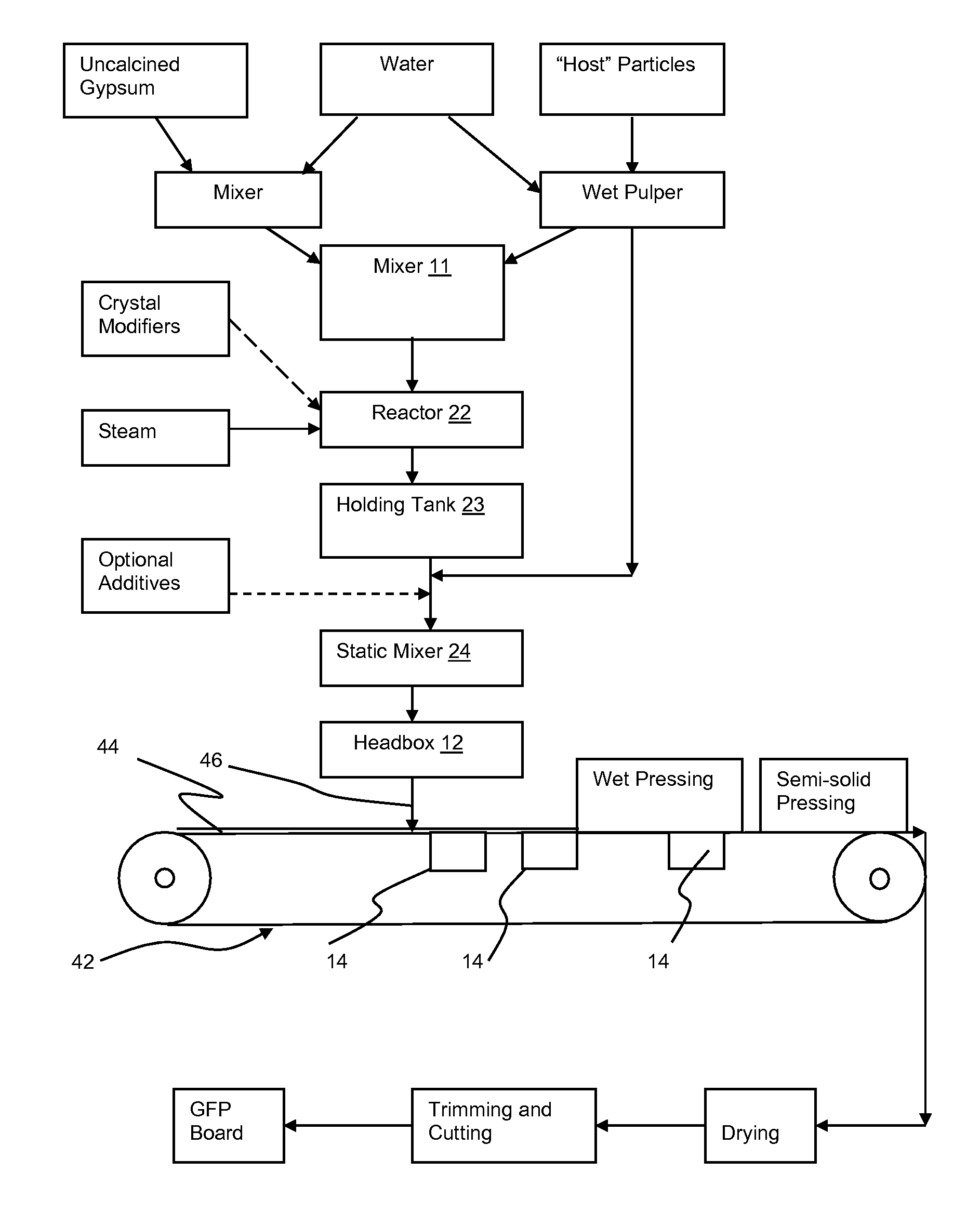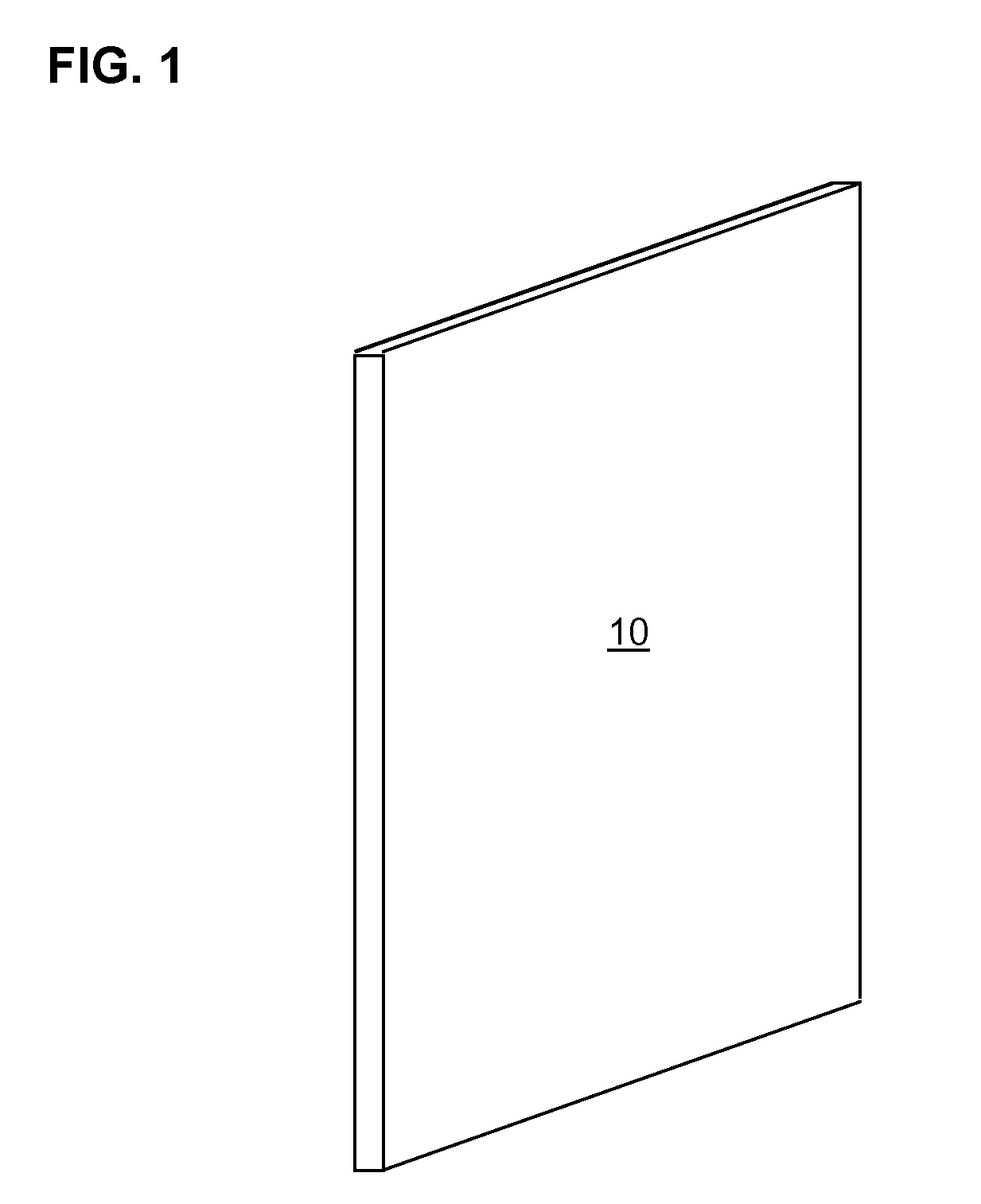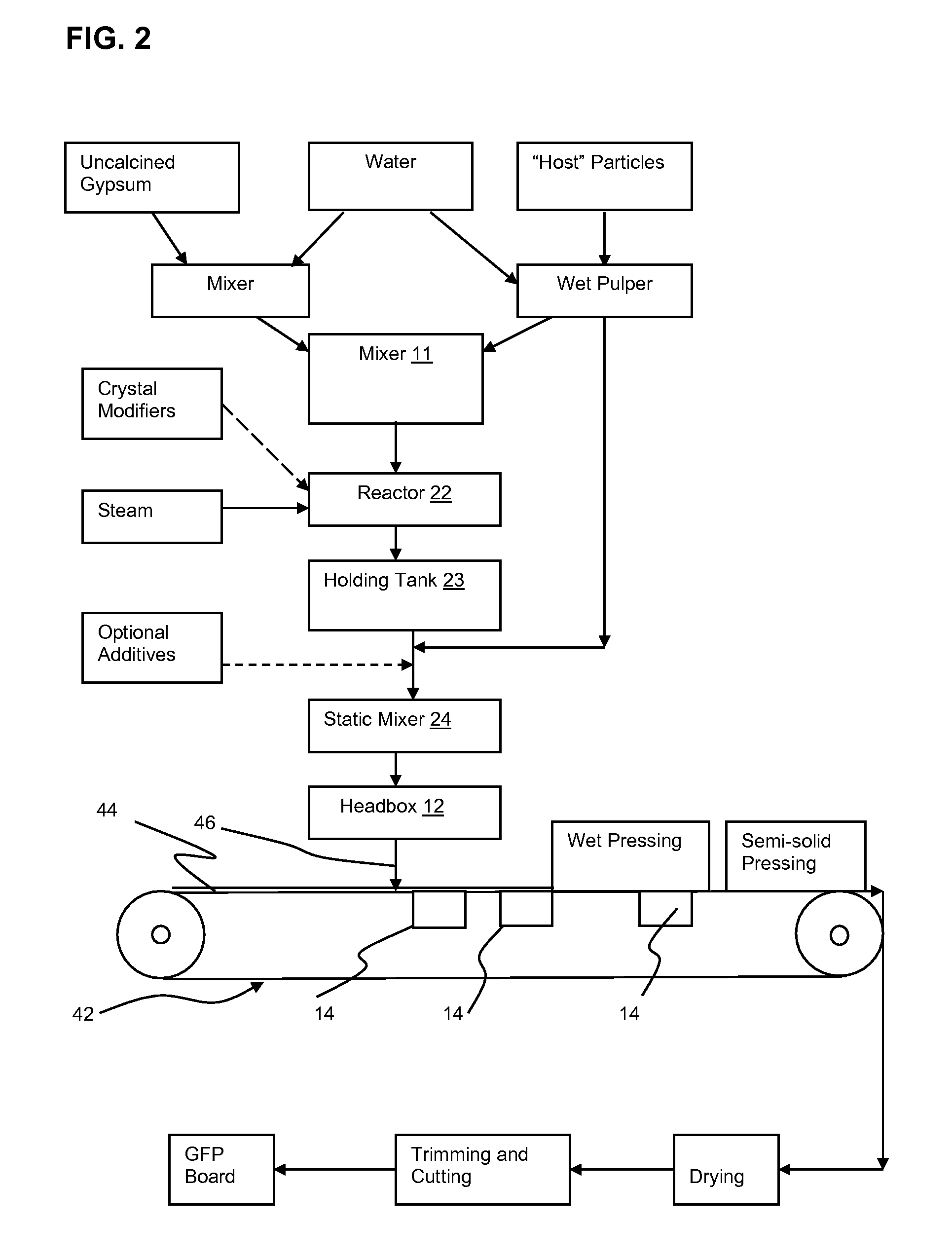Low fiber calcination process for making gypsum fiberboard
a calcination process and low fiber technology, applied in the direction of water-setting substance layered product, sustainable waste treatment, solid waste management, etc., to achieve the effect of less strength, quick setting time, and easy rehydration
- Summary
- Abstract
- Description
- Claims
- Application Information
AI Technical Summary
Benefits of technology
Problems solved by technology
Method used
Image
Examples
example 1
[0080]Extended trials were conducted on a commercial GFP production line modified to add a first portion of paper cellulose fiber to a gypsum slurry before being fed to reactor 22 and a second portion of paper cellulose fiber added to the slurry after reaction in reactor 22. The first portion of fibers was added in an amount of 4.5 wt % on a dry basis to an aqueous slurry of gypsum that is mixed before being fed into the reactor 22. The overall slurry consistency was 25%, which was a substantial increase compared to a typical level of 16% to 18% for conventional slurries with 8.5 wt % fiber. Consistency, which is also known as “water demand” is a term of art and is determinable according to ASTM Procedure C472, or its substantial equivalents. It is defined as the amount of water in grams per 100 grams of stucco. Consistency for purposes of gypsum board manufacture may be defined as the water volume required giving a standard viscosity or flow when 100 grams of stucco is dispersed by...
example 2
[0083]The trial of example 1 was repeated with a trial run of about one hour with the use of about 3.25 wt. % paper cellulose fiber in the first portion added to aqueous slurry of gypsum that is mixed before being fed to the reactor for co-calcination. The overall consistency of the slurry was 25%-28%. The overall increase in consistency resulted in a reduction of steam energy required to calcine the slurry of over about 45% was achieved relative to the amount of steam required to calcine the slurry with conventional 8 to 10% cellulose fiber in the reactor. The calcination time was reduced to about 16-22 min.
[0084]The resulting calcined gypsum / fiber slurry was pumped to a fourdinier style headbox along with a stream of a second portion of pulped fiber to that was added to give a total fiber content of about 10 wt %. The composite slurry was then deposited by the headbox onto a porous forming fabric and then dewatered through the porous forming fabric with the use of vacuum boxes 14,...
PUM
| Property | Measurement | Unit |
|---|---|---|
| weight % | aaaaa | aaaaa |
| wt % | aaaaa | aaaaa |
| density | aaaaa | aaaaa |
Abstract
Description
Claims
Application Information
 Login to View More
Login to View More - R&D
- Intellectual Property
- Life Sciences
- Materials
- Tech Scout
- Unparalleled Data Quality
- Higher Quality Content
- 60% Fewer Hallucinations
Browse by: Latest US Patents, China's latest patents, Technical Efficacy Thesaurus, Application Domain, Technology Topic, Popular Technical Reports.
© 2025 PatSnap. All rights reserved.Legal|Privacy policy|Modern Slavery Act Transparency Statement|Sitemap|About US| Contact US: help@patsnap.com



